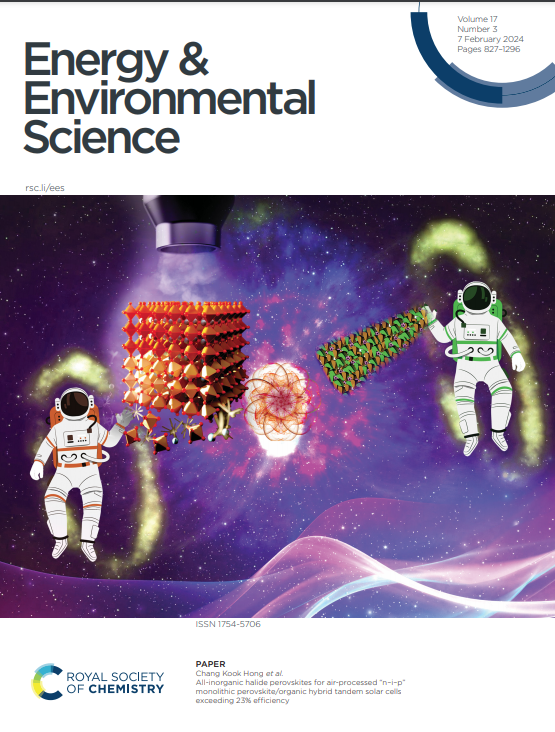Unlocking the Potential of Internal Li-ion transfer in Ni-Rich Cathodes Blended with LiFePO₄ to Address First Cycle Irreversible Capacity Loss and Degradation
IF 32.4
1区 材料科学
Q1 CHEMISTRY, MULTIDISCIPLINARY
引用次数: 0
Abstract
Ni-rich cathodes are widely used in lithium-ion batteries (LIBs) due to their high capacity and cost-effectiveness. However, they suffer from significant irreversible capacity loss during the first cycle (initial capacity loss, ICL), which limits their practical potential. The ICL stems from the intrinsic properties of the material, as the number of Li vacancies—i.e., available sites for Li-ion intercalation—naturally decreases toward the end of discharge, severely hindering further lithiation. While various strategies, such as doping and coating, have been explored, a definitive solution remains elusive. Here, we propose a novel approach to mitigate ICL in Ni-rich cathodes by blending them with LiFePO₄. Our findings reveal unique internal Li-ion transfer between the two materials at the end of discharge. Initially, Li ions intercalate into FePO₄ and are then rapidly transferred to Li1-xNiO₂, driven by electrochemical potential differences. This process introduces a fast, spontaneous Li insertion mechanism at the end of discharge, replenishing vacancies in Li1-xNiO₂ and mitigating ICL. Additionally, we found that these internal Li ion transfer become more enhanced with cycling, thereby slowing the rate of capacity degradation. Thus, this study highlights the potential of leveraging internal Li ion transfer in blended electrodes to overcome the inherent challenges of battery materials. By simply blending Ni-rich cathodes with conventional materials like LiFePO₄, we can significantly enhance both performance and longevity.解锁富镍阴极与lifepo4混合中内部锂离子转移的潜力,以解决第一循环不可逆容量损失和退化问题
富镍阴极因其高容量和高性价比而广泛应用于锂离子电池。然而,它们在第一个循环中会遭受严重的不可逆转的容量损失(初始容量损失,ICL),这限制了它们的实际潜力。ICL源于材料的固有性质,如锂空位的数量,即。在放电结束时,锂离子嵌入的可用位置自然减少,严重阻碍了进一步的锂化。虽然已经探索了各种各样的策略,如掺杂和涂层,但最终的解决方案仍然难以捉摸。在这里,我们提出了一种通过将富镍阴极与LiFePO₄混合来减轻ICL的新方法。我们的研究结果揭示了放电结束时两种材料之间独特的内部锂离子转移。最初,Li离子插入到FePO₄中,然后在电化学电位差的驱动下迅速转移到Li1-xNiO₂中。该工艺在放电结束时引入了一种快速、自发的锂插入机制,补充了Li1-xNiO₂中的空位,减轻了ICL。此外,我们发现这些内部锂离子转移随着循环变得更加增强,从而减缓了容量退化的速度。因此,这项研究强调了利用混合电极中的内部锂离子转移来克服电池材料固有挑战的潜力。通过简单地将富镍阴极与lifepo4等传统材料混合,我们可以显着提高性能和寿命。
本文章由计算机程序翻译,如有差异,请以英文原文为准。
求助全文
约1分钟内获得全文
求助全文
来源期刊

Energy & Environmental Science
化学-工程:化工
CiteScore
50.50
自引率
2.20%
发文量
349
审稿时长
2.2 months
期刊介绍:
Energy & Environmental Science, a peer-reviewed scientific journal, publishes original research and review articles covering interdisciplinary topics in the (bio)chemical and (bio)physical sciences, as well as chemical engineering disciplines. Published monthly by the Royal Society of Chemistry (RSC), a not-for-profit publisher, Energy & Environmental Science is recognized as a leading journal. It boasts an impressive impact factor of 8.500 as of 2009, ranking 8th among 140 journals in the category "Chemistry, Multidisciplinary," second among 71 journals in "Energy & Fuels," second among 128 journals in "Engineering, Chemical," and first among 181 scientific journals in "Environmental Sciences."
Energy & Environmental Science publishes various types of articles, including Research Papers (original scientific work), Review Articles, Perspectives, and Minireviews (feature review-type articles of broad interest), Communications (original scientific work of an urgent nature), Opinions (personal, often speculative viewpoints or hypotheses on current topics), and Analysis Articles (in-depth examination of energy-related issues).
 求助内容:
求助内容: 应助结果提醒方式:
应助结果提醒方式:


